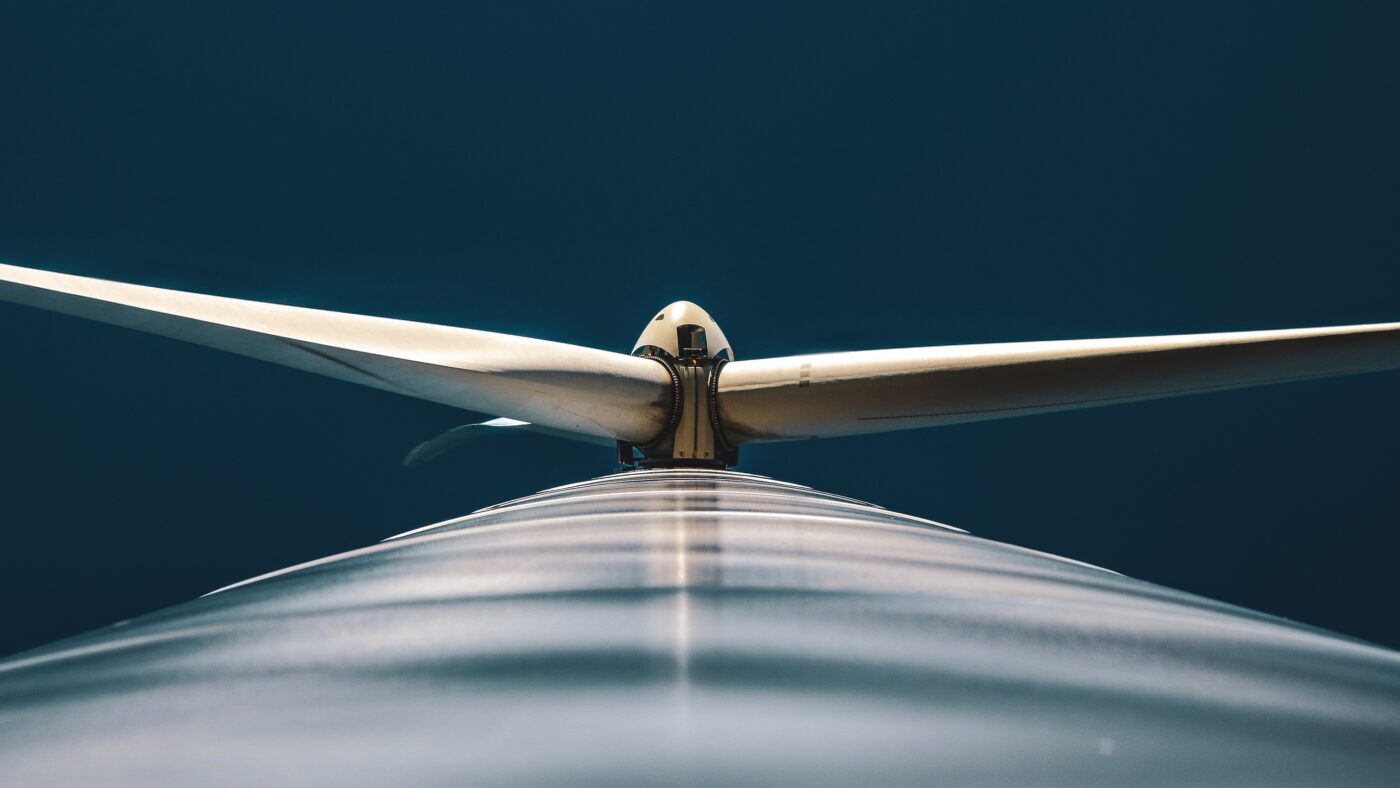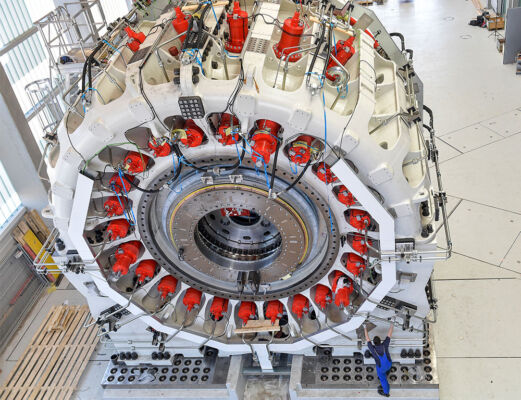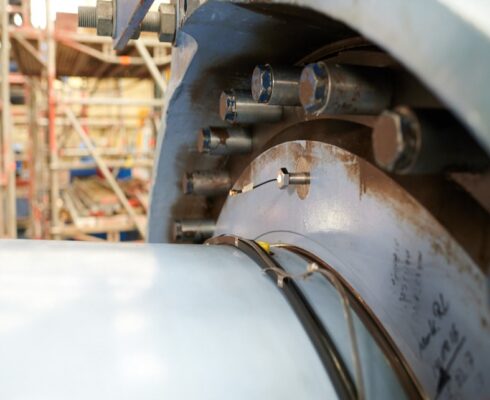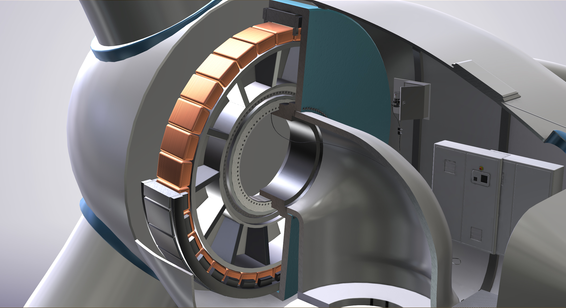Looking at a wind turbine’s setup, the most complex and compartmentalized unit is without a doubt the nacelle. It not only contains the generator that turns mechanical energy into electricity but it also encompasses the gearbox that keeps the turbine running. All these moving parts form the drivetrain of a wind turbine, which is always at risk of becoming subject to malfunction due to the challenging operating conditions. For a bearings and seals specialists like SKF, ensuring operations run smoothly and safely is vital.
Rigid and robust
The goal is to keep the turbines operating as reliably and precisely as possible. Incorporating all mechanical components directly into the gearbox – instead of scattering the parts inside the nacelle – makes the arrangement more robust and less prone to breaking down.
Currently SKF has developed over six thousand rigid arrangements which can be found spinning around the world. Operators are profiting from a higher load carrying capacity and alternative cage technology that both drive up power density. On top of that, the materials were hardened with a special induction technique which keeps the structures light and reduces the overall Levelized Cost of Energy (LCoE).
Still, even with a more robust integrated drivetrain arrangement, the mechanical components of the nacelle are exposed to ongoing harsh conditions such as heavy loads, severe weather conditions, and even corrosive seawater. Thus, they are constantly at risk of failure. Choosing a suitable bearing for a turbine is one of the factors that contribute to safer wind energy production.
Main shaft bearings
When selecting the best bearing, there is no one-size-fits-all solution. The right choice depends on the available space within the nacelle, the construction of the gearbox, and the way each unit operates. Additionally, all parts must work together seamlessly to ensure optimal performance.
To ensure the that have been examined at the company’s very own Sven Wingquist Test Center in Schweinfurt, Germany. The solutions include cylindrical roller bearings, spherical roller bearings, tapered roller bearings, CARB arrangements, and SKF Nautilus.
However, to protect every bearing and component inside the nacelle, choosing the right set of seals is equally as important.
Main shaft seals
Since wind can blow through everything and everywhere, it can also pick up and carry around all sorts of things. Over time, this can cause contamination and an accumulation of debris in wind turbines. Seals are deferring this process enormously, making them a vital component of a wind turbine.
They also protect the mechanical parts inside the nacelle from outside dirt and are responsible for keeping the lubricant in. To do that, they need to withstand and limited lubrication conditions that are common for the turbine’s main shafts. For this reason, SKF developed the axial excluder seal, made from a unique polyurethane material with high abrasion resistance and wear strength.
SKF’s HSS and HRS radial shaft seals are alternatives to protect main shaft bearings. Made of polyurethane to extend service life, they cut maintenance costs, boost reliability and can store excess lubricant while excluding contaminants that could lead to premature failure.
Fit for the future
Bearings and seals are a natural fit and are linked directly to the performance and longevity of the entire turbine. Throughout decades of developing and innovating components tailored to the needs of operators in the wind industry, SKF is an expert in this field and can help equip your turbine in the best way. As a supplier for both bearings and seals, SKF can ensure a great fit for every main shaft – while further developing and testing their existing solutions to match future requirements.



